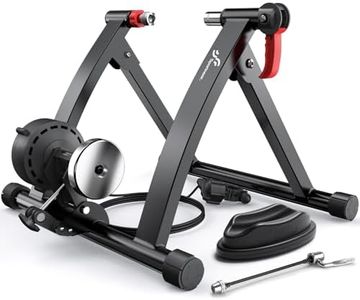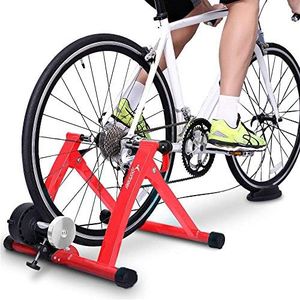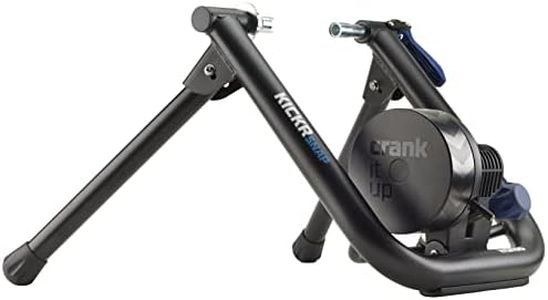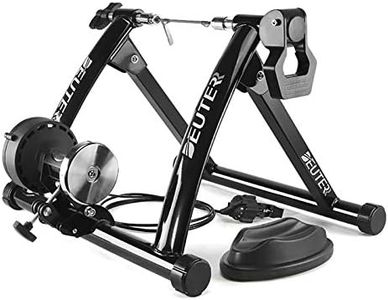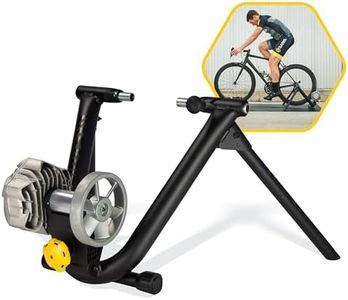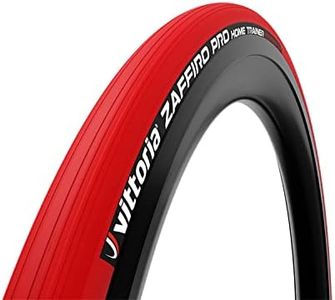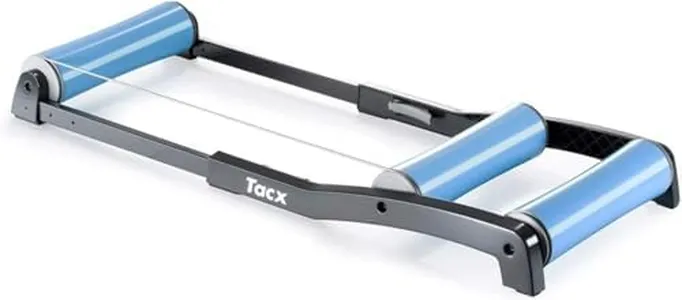We Use CookiesWe use cookies to enhance the security, performance,
functionality and for analytical and promotional activities. By continuing to browse this site you
are agreeing to our privacy policy
10 Best Bike Trainers
From leading brands and best sellers available on the web.Buying Guide for the Best Bike Trainers
Picking the right bike trainer is all about matching your cycling goals, workout habits, and available space. There are several types of trainers, and each serves a slightly different purpose, whether you want a realistic road feel, a quiet ride, or easy storage. Start by thinking about how often you’ll use the trainer, whether you need it to be portable, how important noise level is, and if you want to connect to cycling apps. Understanding the core features will help you narrow your choices and find a trainer that supports your indoor cycling goals.Trainer TypeBike trainers generally come as wheel-on, direct drive, or roller types. Wheel-on trainers are easy to set up and ideal for occasional use but may be less accurate and a bit noisy. Direct drive trainers require you to remove your bike's rear wheel, usually offering better road feel, quieter operation, and higher accuracy—best for serious cyclists. Rollers let you ride freely, balancing your bike as you pedal, which is great for improving skills but may be less suitable for high-intensity workouts. Choosing the trainer type depends on how realistic you want the ride to feel and how committed you are to regular training: casual users often prefer wheel-on for ease, while more dedicated riders may opt for direct drive.
Resistance MechanismBike trainers create pedaling resistance through magnetic, fluid, or electronic systems. Magnetic trainers are reliable and simple, but often a bit louder and with limited resistance range, making them better for light workouts. Fluid trainers are quieter and increase resistance as you pedal harder, which feels more natural—good for most users. Smart or electronically controlled trainers allow you to simulate hills and connect to apps, offering the broadest range of resistance; they're great if you like structured workouts or interactive rides. Your choice should be guided by how much control and variety you want in your workouts.
Connectivity and Smart FeaturesSome trainers can connect to cycling apps or sensors using Bluetooth or ANT+. Smart trainers allow you to follow virtual courses, track your progress, and automatically adjust resistance. Classic, non-connected trainers are simpler and work well if you just want a basic ride. If you enjoy training plans, virtual races, or want to measure your performance, smart features can make your workouts far more engaging. Decide based on whether you want to keep things simple or you’re excited by the idea of interactive training.
Noise LevelNoise is an important factor, especially if you plan to train in an apartment or near others. Magnetic trainers tend to be the loudest, fluid trainers are quieter, and direct drive smart trainers are usually the quietest of all. Think about your environment: if you need something silent, focus on trainers labeled as quiet or consider direct drive options; if noise doesn’t bother you, you have more flexibility.
CompatibilityNot all trainers fit every bike. Check the wheel size and axle compatibility of your trainer with your bike to avoid any surprises. Direct drive trainers often require specific cassette types and axle sizes. Make sure you understand what your bike uses and ensure it's supported to avoid extra hassle when setting up.
Portability and StorageIf you need to move your trainer or store it away after use, weight and foldability matter. Wheel-on trainers and some rollers are usually lighter and fold down for storage, making them easier to handle. Direct drive trainers can be bulky and heavier, so consider your available space and how often you need to move the trainer when making your decision.
Realism and Ride FeelSome trainers offer a more “realistic” road feel, which makes indoor cycling more enjoyable and effective. Direct drive trainers and higher-end fluid trainers often mimic outdoor riding better, while basic wheel-on trainers can feel less smooth. If you plan on long rides or value a natural-feeling session, prioritize trainers known for realism.

